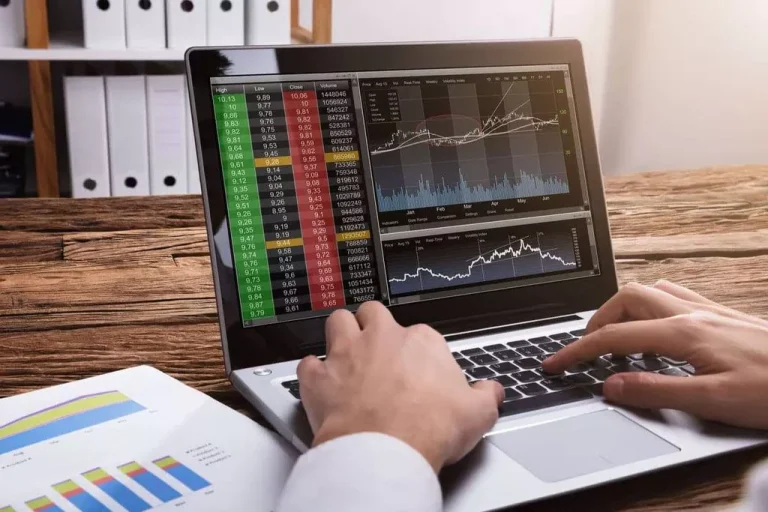Buy-side Vs Sell-side: What’s The Difference? Definitive Information
Sell-side analysts are mainly paid for information move and to entry management and different high-quality info sources. Compensation for buy-side analysts is much more dependent upon the standard of recommendations that the analyst makes and the fund’s total success. On the compensation front, sell-side analysts often make extra, however there’s a wide range, and buy-side analysts at profitable funds (particularly hedge funds) can do a lot better. Working circumstances arguably tilt towards buy-side analysts; sell-side analysts are incessantly on the road and infrequently work longer hours, although buy-side analysis is arguably a higher-pressure job. Sell-side analysts convince institutional accounts to direct their buying and selling through the buying and selling desk of the analyst’s agency, which adds advertising to their obligations https://www.xcritical.in/.
A requirement of higher skill-sets and knowledge for buy-side analysts for the investment selections makes them fetch larger pay than the sell-side analysts. In all these roles, you are coordinating financial transactions and the underwriting of recent securities. It is these establishments that provide investment recommendation and certainly undertake an funding for its shopper inside the context of the client’s objectives.
Buy Aspect Vs Sell-side Traders 10 Differences
- On the opposite hand, the sell side consists of funding banks and advisory firms that promote and structure offers, helping purchasers increase capital or promote belongings.
- For instance, a company that should elevate money to construct a model new manufacturing facility would contact its investment banker to issue debt or fairness to finance the constructing.
- The PM decides to take a position and buys the securities, which flows the money from the buy-side to the sell-side.
The buy-side of a deal is represented by specialists who help an acquirer purchase securities provided by the sell-side. Meanwhile, a buy-side analyst usually cannot afford to be wrong usually, or at least to not a degree that significantly impacts the fund’s relative performance. DealRoom facilitates quite a few M&A transactions yearly for organizations across both sectors.

It’s natural to assume that buy-side traders have an advantage over sell-side merchants since they’re essentially on opposite sides of the same transaction. A Lot of this info is digested and analyzed—it by no means truly reaches the general public page—and cautious buyers mustn’t essentially assume that an analyst’s printed word is their actual feeling for a corporation. In this process, Goldman and the consumer agree that the most effective course of action would be to lift capital via a debt issuance. At the most junior positions, roles may be very related, however at more senior positions the roles start to differ extra significantly. As the word “sell” implies, on the promote side there may be extra salesmanship required than is often the case on the buy-side.
Amongst the most important core differences between the sell facet and buy facet is that the previous focuses on sealing as many offers as possible, whereas the latter holds investments for larger returns over time. Their major duty is to make investments on behalf of the company’s funds, somewhat than working with particular person traders who would possibly wish to buy inventory via a broker. Financial analysts also conduct detailed monetary modeling to predict future performance, analyze monetary statements, and monitor economic developments. Analysts may prepare detailed reviews and displays for purchasers or senior administration, take part in earnings calls, and attend trade conferences.
Purchase Side Analyst

These are services that accumulate cash from buyers and spend money on numerous securities with the desired funding goals. On the other hand, buy-side professionals take care of managing portfolios, research, and selections that should create worth for the customer or shopper similar to an investor. The purchase side is the group of merchants who purchase belongings (e.g. shares, bonds, commodities) from the market and work for banks, investment corporations, and sovereign wealth funds. Whereas the sells facet is the group of merchants who sell belongings (e.g. shares, bonds, commodities) to the market and work as particular person traders, hedge funds, and private fairness firms. The sell-side is companies that are probably to promote, issue, or trade-in financial securities, together with corporations, advisory firms, and funding banks. The buy-side could be defined as companies usually shopping for monetary securities, together with pension funds, investment managers, and hedge funds.
Sell-side firms might face pressures to generate investment banking or buying and selling revenue, which may influence their analysis or recommendations. Buy-side corporations must exercise due diligence and depend on multiple sources of information to make informed investment selections Prime Brokerage. The promote side is an indispensable ingredient in all financial methods, being a supplier of distinctive services to the final but not the least envisaged market participant.
There is a broad range of careers available on the sell aspect, with more entry-level alternatives than there are sometimes out there on the buy-side. Accounting principles & ideas assist in constant monetary reporting, permitting corporations to be more simply… Buy-side and sell-side in mergers and acquisitions focus entirely on finding the alternatives for M&A transactions. The buy-side finds probably the most helpful opportunities for the client, and the sell-side—for the vendor.
Most start on the promote side, as the buy facet sometimes requires more expertise to make sound investment selections for shoppers. Others remain on the sell aspect, particularly in the event that they excel in salesmanship, have the power to take care of relationships with shoppers and find success there. On the other hand, sell-side firms earn income by way of fees and commissions by overseeing deals.

Others see them as heartless capitalists who are only interested in being profitable for themselves and their employers. When an analyst initiates coverage on a company, they often assign a rating of buy, promote, or hold. This ranking is a sign to the investment group, portraying how the analyst believes the stock price will transfer in a given timeframe sell side liquidity. Basically, the sell-side analysts’ research directs the buy-side agency to trade by way of their buying and selling department, creating profit for the sell-side agency. In addition, buy-side analysts usually have some say in how trades are directed by their agency, and that could be a key a half of sell-side analyst compensation. Buy-side companies don’t often pay for or buy the sell-side analysis outright but are often indirectly responsible for a sell-side analyst’s compensation.

Laisser un commentaire
Rejoindre la discussion?N’hésitez pas à contribuer !